This article was co-authored by Vlad Gendelman, MD. Dr. Vlad Gendelman, MD is an Orthopaedic Surgery Specialist in Los Angeles, California. With over 15 years of experience, he specializes in general orthopaedic surgery, including orthopaedic trauma, sports injuries, and joint replacements. Dr. Gendelman holds a BS in Biology from the University of Southern California and received his Doctorate from the University of California at Irvine. He then completed his residency in Orthopedic Surgery at SUNY Downstate. Dr. Gendelman is board certified with the American Board of Orthopaedic Surgery and is a fellow of the American Academy of Orthopaedic Surgery. He is a member of the Los Angeles County Medical Association, the California Medical Association, California Orthopaedic Association, and the American Academy of Orthopaedic Surgery. Dr. Gendelman is a published author of multiple papers in the field of orthopaedic surgery.
There are 25 references cited in this article, which can be found at the bottom of the page.
wikiHow marks an article as reader-approved once it receives enough positive feedback. This article received 14 testimonials and 100% of readers who voted found it helpful, earning it our reader-approved status.
This article has been viewed 755,320 times.
Varicose veins—gnarled, dilated blood vessels that occur most frequently in the legs—affect about half of the adult population of the United States. They are generally caused by pressure in the veins that, over time, weakens and damages the vessel valves and walls. For most people, varicose veins and spider veins (their smaller, capillary-based cousins) are merely unsightly nuisances, but they can also make walking and standing extremely painful, and in extreme cases, they can cause skin ulcers. While there is no sure way to prevent the formation of varicose veins, there are a number of things you can do to decrease your chances of getting them.
Steps
Pursuing Basic Preventative Health Measures
-
1Know your risk factors. Some people are more prone to developing varicose veins than others. Knowing the risk factors for developing varicose veins will help you choose healthy lifestyle habits. If you have several risk factors, it’s a good idea to consult with your doctor about how to manage your risk.[1]
- Age. Age is a significant factor in whether you may develop varicose veins. Aging causes your veins to lose some of their elasticity. The valves inside your veins stop functioning as efficiently. This can cause varicose veins to develop.[2]
- Biological sex. Women are more likely to develop varicose veins. This may be because of the hormonal changes female bodies usually experience, such as menopause and pregnancy.
- Genetics. If a member of your immediate family has varicose veins, you may be at greater risk for developing them as well.[3] If you were born with weaker vein valves, you are at higher risk of developing varicose veins.
- Obesity. Being overweight can put a lot of extra pressure on your veins. This can lead to developing varicose veins.
- Lack of movement. If you stand or sit still for long stretches of time, you may be at greater risk for developing varicose veins.[4] Staying in position for too long puts extra pressure on your veins to pump blood to your heart.[5]
- Leg trauma. If you have had previous trauma or injuries, such as blood clots, you are at higher risk for developing varicose veins.[6]
-
2Maintain a healthy weight. Excess weight will put undue pressure on your legs and circulatory system. If you are overweight, losing weight will reduce this pressure, thereby reducing your risk of varicose veins.[7]Advertisement
-
3Develop healthy eating habits. Avoid foods with high calorie and low nutrition content. Eat a diet that’s high in fiber. Some studies suggest a relationship between low-fiber diets and the development of varicose veins.[8] Diets high in fiber also help lower your cholesterol and may reduce blood pressure.[9]
- Avoid added salt when possible. Reducing your salt intake can help reduce swelling in varicose veins. It may also reduce your body’s water retention.[10]
-
4Exercise regularly. Walking and jogging improve circulation in the legs, and proper circulation helps ward off the development and worsening of varicose veins. Exercise also reduces overall high blood pressure and strengthens your entire circulatory system.[11]
- Running is also helpful in preventing the appearance of varicose veins. It improves circulation in your legs.
-
5Quit smoking. Smoking contributes to many health problems. Studies have shown that the high blood pressure associated with smoking also helps cause varicose veins. Smoking is also associated with “lower limb venous insufficiency,” where blood does not flow properly and pools into the legs.[12]
-
6Avoid taking high-estrogen birth control pills. Long-term use of birth control pills containing high levels of estrogen and progesterone may increase your risk of developing varicose veins. Hormone replacement therapy may have similar effects. Talk with your doctor about the best option for you.[13]
- Prolonged use of estrogen and progesterone may weaken the valves in your veins and alter circulation in your legs.[14]
- Birth control that uses lower doses of estrogen is less likely to result in varicose veins or blood clots.
-
7Stay out of the sun. In fair-complexioned people, excessive sun exposure can cause spider veins. Exposure to the sun also poses risks such as the possibility of developing skin cancer.[15]
- The Centers for Disease Control and Prevention (CDC) recommends that you always wear sunscreen when outdoors. Stay out of the sun during midday, when the sun is highest.[16]
Taking Care of Your Legs
-
1Avoid prolonged standing. Standing in one place for a long time increases venous pressure in the legs and feet.[17] Over time, this pressure weakens the blood vessel walls. This will worsen existing varicose veins and could contribute to the development of new ones.[18]
- Since prolonged standing is almost unavoidable in some jobs, mitigate the harm by shifting your position as frequently as possible. Try to walk around at least every 30 minutes.
-
2Sit properly. Sit up straight and don’t cross your legs. Good posture improves circulation, while crossed legs may restrict blood flow to and from the legs.[19]
- Avoid sitting for long stretches of time without taking a break. Get up every half-hour or so to stretch or walk around.
-
3Keep your legs elevated when possible. Relaxing and “putting your feet up” can help reduce your risk of developing varicose veins.[20] Try to raise your legs above your heart for 15 minutes, 3-4 times per day.[21] This will help improve circulation and reduce pressure.
- When possible, keep your legs elevated when sitting or sleeping.[22]
- Other options include using an inversion table or elevating the foot of your bed so that your feet are slightly higher than your head when you sleep. Consult with your doctor before trying these methods.
-
4Redesign your wardrobe. Improve circulation to your lower body by avoiding tight-fitting clothes. Be especially careful to avoid tight fits around your waist, legs, and groin area. Tight clothing can make existing varicose veins worse, and may increase your risk of developing them.[23]
-
5Wear compression stockings. If you’re developing varicose veins, try regularly using compression stockings or hose.[26] These can be purchased at medical supply stores or pharmacies and come in a variety of different compressions. Consult with your doctor before buying or wearing compression stockings.[27]
- Use a tape measure to measure your legs so that you get the right size. Compression stockings should provide firm compression, but shouldn’t necessarily feel tight.[28]
- If you will be flying for a long trip, discuss getting compression hose with your medical adviser. These can help reduce strain on your legs and may be helpful for preventing the worsening of existing varicose veins.
Getting Medical Treatment
-
1Recognize the symptoms of varicose veins. Varicose veins don’t usually cause serious health problems. However, they can cause discomfort, pain, and embarrassment. You may want your doctor to help you manage your varicose veins, even if they don’t pose a health hazard. Common symptoms of varicose veins include:
- Aches and pain in the legs
- Throbbing or cramping
- Feelings of heaviness or swelling in the legs
- Itchy, irritated, or darkened skin
- Fidgety or restless legs
-
2Know when to seek medical help. While most varicose veins do not pose a serious health threat, sometimes they can lead to issues you should seek medical help for. If you have varicose veins and experience any of the following symptoms, see your doctor:[29]
- Sudden swelling of the leg
- Redness or warmth around the vein
- Change in skin thickness or color
- Bleeding on or around a varicose vein
- Tender lump in your leg
- Open sores or ulcers
-
3Consider other treatment options. If your at-home changes do not help your varicose veins, you may want to consider other treatments. Consult with your doctor about your options.[30]
- Sclerotherapy. This is the most common treatment for varicose veins. Sclerotherapy involves injecting chemicals into the varicose vein, which causes it to swell and then seal shut. After a few weeks, the vein turns into scar tissue and then fades. This procedure can usually be done right in your doctor’s office.
- Laser surgery. This is a less common technique, because not all skin types and colors can be treated safely this way. It is also usually not effective for veins larger than 3 millimeters (1/10 of an inch).
- Endovenous techniques. These treatments are designed for deeper or severe varicose veins. They are usually done under local anesthesia in your doctor’s office.
- Surgery. Surgeries are usually reserved to treat very large or very severe varicose veins. Consult with your doctor to consider whether surgical treatments are right for you.
Expert Q&A
Did you know you can get expert answers for this article?
Unlock expert answers by supporting wikiHow
-
QuestionHow do I stop varicose veins from forming?
 Vlad Gendelman, MDDr. Vlad Gendelman, MD is an Orthopaedic Surgery Specialist in Los Angeles, California. With over 15 years of experience, he specializes in general orthopaedic surgery, including orthopaedic trauma, sports injuries, and joint replacements. Dr. Gendelman holds a BS in Biology from the University of Southern California and received his Doctorate from the University of California at Irvine. He then completed his residency in Orthopedic Surgery at SUNY Downstate. Dr. Gendelman is board certified with the American Board of Orthopaedic Surgery and is a fellow of the American Academy of Orthopaedic Surgery. He is a member of the Los Angeles County Medical Association, the California Medical Association, California Orthopaedic Association, and the American Academy of Orthopaedic Surgery. Dr. Gendelman is a published author of multiple papers in the field of orthopaedic surgery.
Vlad Gendelman, MDDr. Vlad Gendelman, MD is an Orthopaedic Surgery Specialist in Los Angeles, California. With over 15 years of experience, he specializes in general orthopaedic surgery, including orthopaedic trauma, sports injuries, and joint replacements. Dr. Gendelman holds a BS in Biology from the University of Southern California and received his Doctorate from the University of California at Irvine. He then completed his residency in Orthopedic Surgery at SUNY Downstate. Dr. Gendelman is board certified with the American Board of Orthopaedic Surgery and is a fellow of the American Academy of Orthopaedic Surgery. He is a member of the Los Angeles County Medical Association, the California Medical Association, California Orthopaedic Association, and the American Academy of Orthopaedic Surgery. Dr. Gendelman is a published author of multiple papers in the field of orthopaedic surgery.
Board Certified Orthopaedic Surgeon
Warnings
- Seek immediate medical care if you have varicose veins and develop chest pain, shortness of breath, or trouble breathing. These symptoms could be signs that a blood clot is traveling to your lungs or heart.⧼thumbs_response⧽
- Beware expensive, unconventional therapies. While most such "treatments" are harmless, they are also usually ineffective. The same can be said of herbal supplements that claim to cure varicose veins. Some supplements may indeed help prevent or treat the problem, but there are few scientific studies that support these treatments. Many companies make unsubstantiated claims. Always check with your doctor before using an herbal supplement. Physicians may not be able to confirm or refute an herbalist’s claims, but they should be able to discuss potentially harmful side effects of certain herbal preparations.⧼thumbs_response⧽
- It is not advisable to try to "break up" a varicose vein with any form of manual therapy, such as massage or vibration. This can cause an embolus, which can get lodged in the capillaries of the heart and cause a heart attack. Emboli can also become lodged in the brain and cause a stroke, or in the lungs and cause a respiratory infarction. These can all cause severe medical problems or even death.⧼thumbs_response⧽
- See your doctor immediately if a varicose vein begins bleeding, if you experience sudden pain or swelling in your legs or feet, or if you notice a lump developing in or near a varicose vein.[33]⧼thumbs_response⧽
References
- ↑ https://www.nhs.uk/conditions/varicose-veins/causes/
- ↑ http://www.nhlbi.nih.gov/health/health-topics/topics/vv/atrisk
- ↑ http://www.nhs.uk/Conditions/Varicose-veins/Pages/Causes.aspx
- ↑ Vlad Gendelman, MD. Board Certified Orthopaedic Surgeon. Expert Interview. 17 July 2020.
- ↑ https://www.uofmhealth.org/health-library/hw113606
- ↑ http://www.nhlbi.nih.gov/health/health-topics/topics/vv/atrisk
- ↑ https://www.aafp.org/afp/2008/1201/p1289.html
- ↑ http://www.nutritionmd.org/consumers/cardiovascular/varicose_nutrition.html
- ↑ http://www.mayoclinic.org/healthy-lifestyle/nutrition-and-healthy-eating/in-depth/fiber/art-20043983
- ↑ https://www.theveininstitute.com.au/how-diet-can-affect-varicose-veins/
- ↑ https://www.nhs.uk/conditions/varicose-veins/
- ↑ http://aje.oxfordjournals.org/content/155/11/1007.full
- ↑ https://www.mayoclinic.org/diseases-conditions/varicose-veins/symptoms-causes/syc-20350643
- ↑ https://journals.plos.org/plosone/article?id=10.1371/journal.pone.0177043
- ↑ https://www.cdc.gov/cancer/skin/basic_info/risk_factors.htm
- ↑ http://www.cdc.gov/cancer/skin/basic_info/sun-safety.htm
- ↑ Vlad Gendelman, MD. Board Certified Orthopaedic Surgeon. Expert Interview. 17 July 2020.
- ↑ http://www.hopkinsmedicine.org/healthlibrary/conditions/cardiovascular_diseases/varicose_veins_85,P08259/
- ↑ https://www.uofmhealth.org/health-library/hw113606
- ↑ https://www.uofmhealth.org/health-library/hw113606
- ↑ http://www.nlm.nih.gov/medlineplus/ency/article/001109.htm
- ↑ https://www.uofmhealth.org/health-library/hw113606
- ↑ http://www.nhlbi.nih.gov/health/health-topics/topics/vv/prevention
- ↑ http://www.nhlbi.nih.gov/health/health-topics/topics/vv/prevention
- ↑ http://www.vascular.surgery.ucsf.edu/conditions--procedures/varicose-veins.aspx
- ↑ Vlad Gendelman, MD. Board Certified Orthopaedic Surgeon. Expert Interview. 17 July 2020.
- ↑ https://www.uofmhealth.org/health-library/hw113550#hw113550-sec
- ↑ http://www.mayoclinic.org/diseases-conditions/varicose-veins/basics/treatment/con-20043474
- ↑ https://myhealth.alberta.ca/Health/aftercareinformation/pages/conditions.aspx?hwid=ut2528
- ↑ http://www.mayoclinic.org/diseases-conditions/varicose-veins/basics/treatment/con-20043474
- ↑ Test This Remedy. By: Goldstein, Laura, Prevention, 00328006, Apr2003, Vol. 55, Issue 4
- ↑ http://www.sciencedaily.com/releases/2014/06/140630094527.htm
- ↑ http://www.hopkinsmedicine.org/healthlibrary/conditions/cardiovascular_diseases/varicose_veins_85,P08259/
About This Article
To prevent varicose veins, try to maintain a healthy weight since being overweight increases your chances of developing them. You can keep your weight down by eating healthy and exercising regularly, which will also strengthen your circulatory system and reduce the appearance of varicose veins. Try to keep your legs elevated as much as possible so you're putting less pressure on the veins in your legs. Also, avoid sitting or standing for prolonged periods of time by walking around and stretching every 30 minutes. To learn how to prevent varicose veins using compression stockings, scroll down!
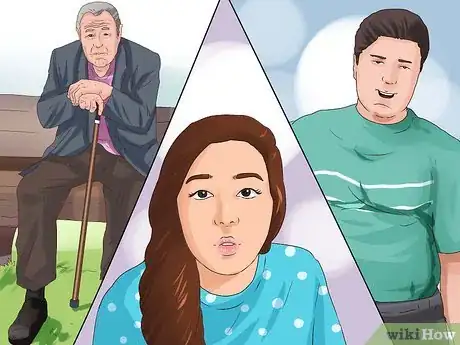






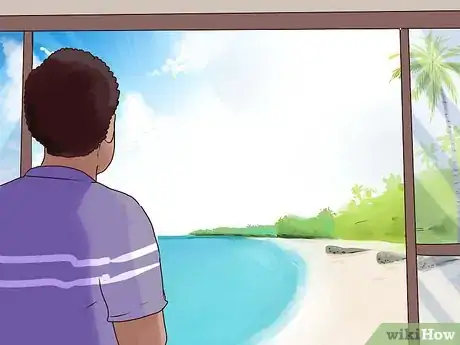

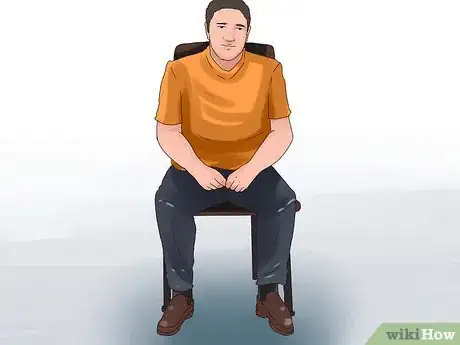

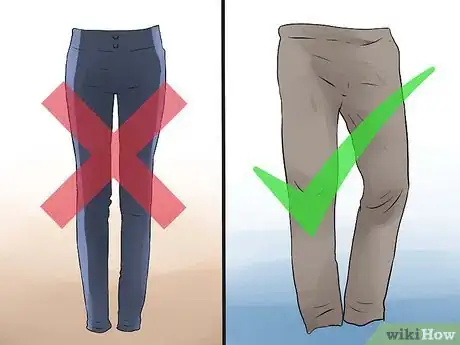
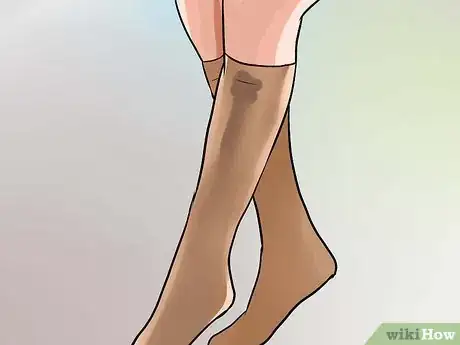

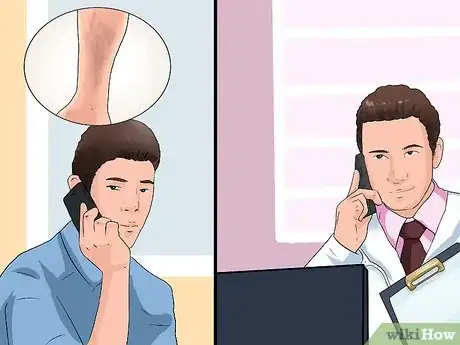
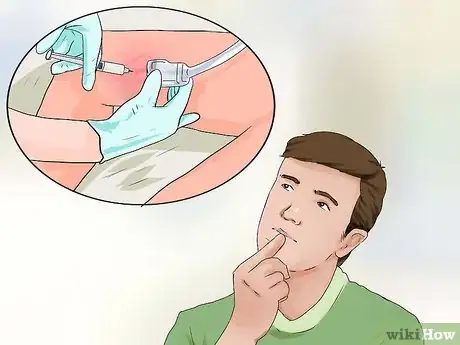

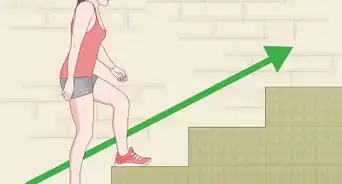
-Step-14-Version-3.webp)

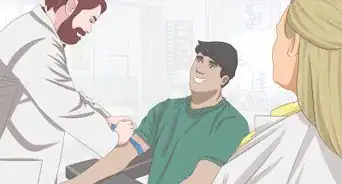

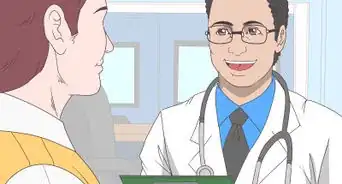
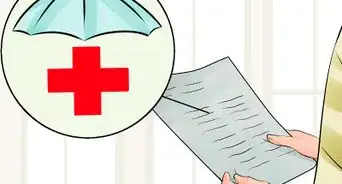

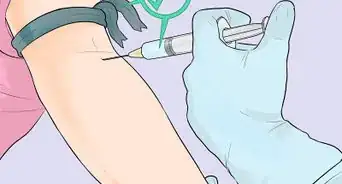

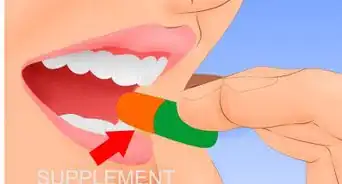













-Step-14-Version-3.webp)
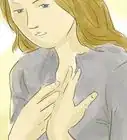



































Medical Disclaimer
The content of this article is not intended to be a substitute for professional medical advice, examination, diagnosis, or treatment. You should always contact your doctor or other qualified healthcare professional before starting, changing, or stopping any kind of health treatment.
Read More...